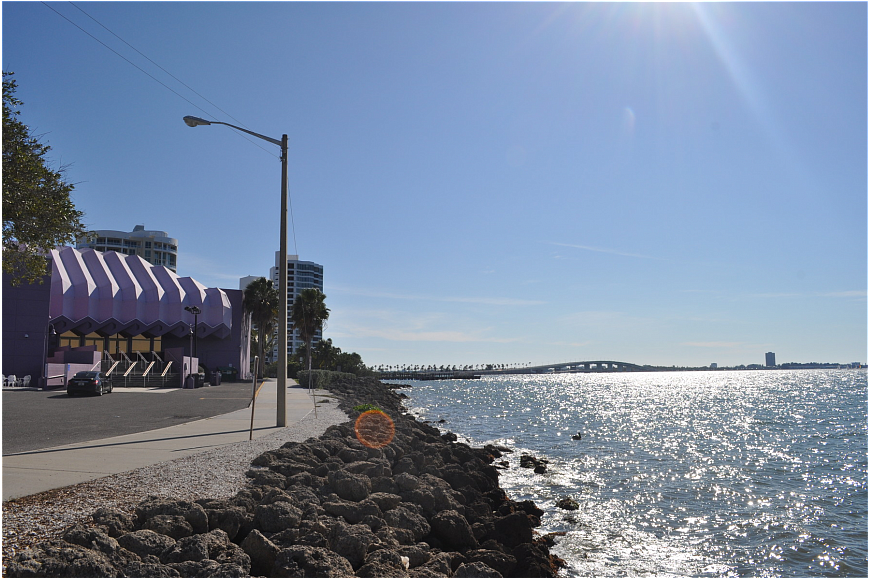- May 14, 2025
-
-
Loading

Loading

A little more than a year from now, the city of Sarasota will have a community-driven master plan for redeveloping more than 40 acres of bayfront land near the Van Wezel Performing Arts Hall.
That’s the goal a group leading the bayfront planning effort has set for itself, Sarasota Bayfront 20:20 volunteer Chairman Michael Klauber announced at a May 25 meeting. By June 30, 2018, Klauber hopes the group will have developed a vision for the city-owned land for officials to review.
The Sarasota Bayfront Planning Organization, composed of nine residents working in coordination with the broader Bayfront 20:20 community group, is searching for a planning company to take the lead in developing the master plan. Between July and September, the Sarasota Bayfront Planning Organization will solicit responses. The group hopes to settle on a company by October.
When the planning organization met for the first time in December, Chairman A.G. Lafley expressed some hesitancy about committing to an aggressive timeline for developing any recommendations. Thanks to input from HR&A Advisors, a New York-based urban consulting firm guiding the search for a planner, Lafley is now assured the target date can be met.
As the Sarasota Bayfront Planning Organization continues its work, stakeholders involved with Bayfront 20:20 are seeking assurance they’ll continue to steer the planning process, too. Klauber reminded those at last week’s meeting that the planning organization meetings are open for anyone to attend, and that any master plan will need community support for the city to adopt it.
“All of this is always going to be in the sunshine,” he said. “It’s all going to be public. Don’t feel like you’re going to be left out.”
One way Bayfront 20:20 wants to get residents engaged is to bring them out to the bayfront — before anything actually gets built there. Klauber is soliciting recommendations for art installations or public events that could be staged on the land.
He brought up projects in other cities as examples. In New York’s Brooklyn Bridge Park, “The Fence” displayed a themed collection of photographs along more than 1,000 feet of fencing. In Palm Beach, “Los Trompos” added a series of large, brightly colored spinning tops to the waterfront.
Klauber encouraged people to think big, but the group also wants people to pitch smaller-scale events, such as yoga classes.
Generating this kind of activity on the bayfront would have two benefits, Klauber said. One, it would establish the bayfront as a public meeting space in many people’s minds. And two, it would encourage community members to start thinking seriously about the type of things they’d like to see on the property in the future.
“The idea is to engage as many of our community organizations as we can to use this public space,” Klauber said.
Lafley, a former CEO of Procter & Gamble, has been involved in similar efforts to program a public space in Cincinnati. He said not everything Bayfront 20:20 tries will work, but a willingness to listen to the public and test out new ideas will eventually lead to success. He recalled a salsa dancing night in Cincinnati, where organizers expected about a dozen people would turn out.
“After work, in a Midwestern city, where the sun doesn’t shine very much and it’s not on the water, hundreds of people showed up,” Lafley said. “A lot of it was just experimentation.”
Bayfront 20:20 will discuss the suggestions it receives for events at a July meeting. In both the short- and long-term conversations, the leaders of the planning effort pledge to let the public point them in the right direction.
“We want your ideas,” Lafley said. “We want your feedback. We’re listening.”